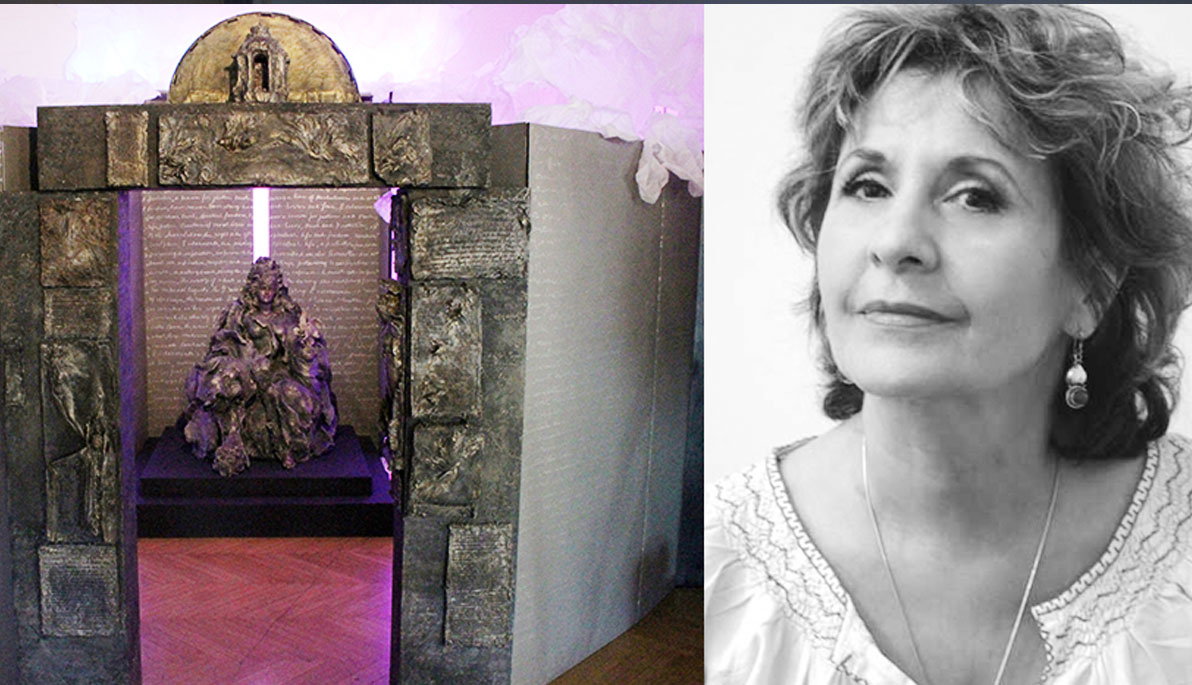News
Vera Manzi-Schacht Discusses New Art Exhibit
September 17, 2015
Vera Manzi-Schacht is no stranger to creating thought-provoking, interactive sculptures. At the September 2015 Art and Psyche Conference in Siracusa, Italy, she discussed the context of her sculptures produced as a visiting artist/scholar in May 2014 at the American Academy in Rome. She spoke with The Box about her sculpture installation, "Memory Palace Chamber," her artistic process and travels, and an upcoming exhibit funded by a National Endowment for the Arts (NEA) grant.
The Box: How did your residency at the American Academy of Rome influence your artwork?
The residency reinforced my fascination with the use of natural light and figurative sculptures. In Rome, I refreshed my spirit in further developing my sculpture installations and explored an abundance of masterworks in the "light and figurative" style of Roman Baroque, such as the Church of Sant'Andrea al Quirinale.
The Box: What's the significance of your latest sculpture installation funded by an NEA grant?
My "Memory Palace Chamber" is a continuation of a memory system developed by the Greeks in the 5th century B.C. and practiced until the invention of the printing press in 1530. The system was a means for storing and remembering information.
Similarly, I envision my sculptures as holders of symbols, archetypes, and personal myths. They are site-specific installations of natural light, terracotta sculpture, color, video and sound. Their atmosphere is crucial. People are meant to enter and exit them. My goal is to immerse viewers in their daily transformation and experience the way a space changes from day to day and season to season, with shifts in the natural environment.
The Box: How has your approach to sculpture evolved over the years?
I started with natural light installations and later began experimenting with gels attached to light sources such as windows, skylights, and doorways. I found that by placing an ultramarine gel on one side of the source and amber on the other side, the light color changes as the sun "moves" through the day. In my latest installation of "Memory Palace Chamber" at Dowling College-Vanderbilt Mansion, my work turns a deep magenta right before the sun sets.
The Box: Speaking of color, what classes are you teaching in the fall 2015 semester?
Sculpture I and Color Theory. I'm delighted to teach the color course because I worked as a textile designer for years to support my sculpture work and studio. Color is pure joy.
The Box: What technologies do you use to make your installations?
To create my videos I use Adobe's Premiere Pro CC, After Effects, and Photoshop.
Photo: Vera Manzi-Schacht visited the Fontana di Diana after attending the Art and Psyche Conference in Siracusa, Italy.
The Box: How did your presentation at the Art and Psyche Conference in Italy relate to your work?
The conference's theme was "layers and liminality," a perfect topic for me. Liminality refers to a portal, entrance, threshold, or in between place that's neither inside or outside. I explore the "liminal" in my artwork. For example, my sculpture installations are designed to be entered through a portal, so people can interact with them.
The Box: Where do you find creative inspiration?
I've been preoccupied with images, symbols, myths, and legends since childhood. I frequently visit the picture library at the Archive for Research in Archetypal Symbolism and the New York Public Library. My minor in medieval art history during graduate school introduced me to the writings and concepts of philosophers and artists who incorporated light into their work.
I'm also influenced by the Irish in Italy during the Middle Ages. My essay on the topic was accepted for the book of essays, Medieval Travel and Travelers, Real and Imagined: Travel as Transformation (to be published later this year). I decided to use the intriguing history, images, and historical figures of this time and transpose them for my video When the Stars Came Out in Pienza.
Read more about Vera Manzi-Schacht on her website.




